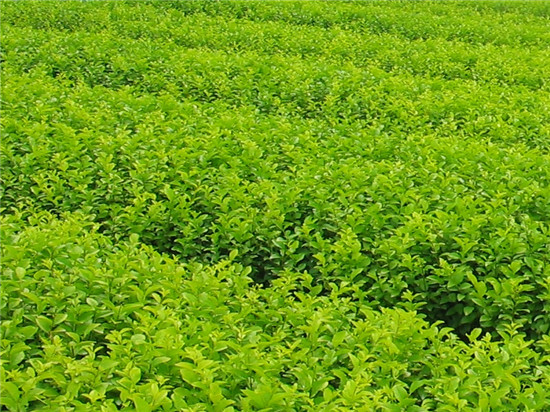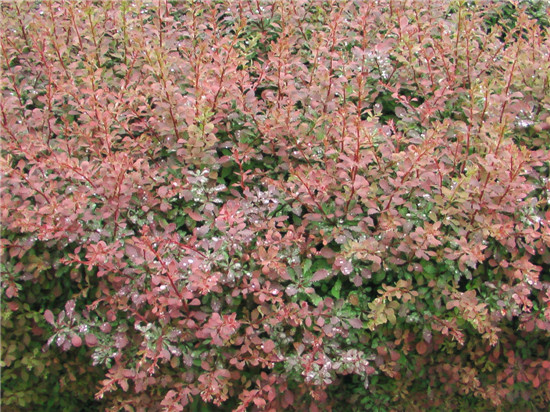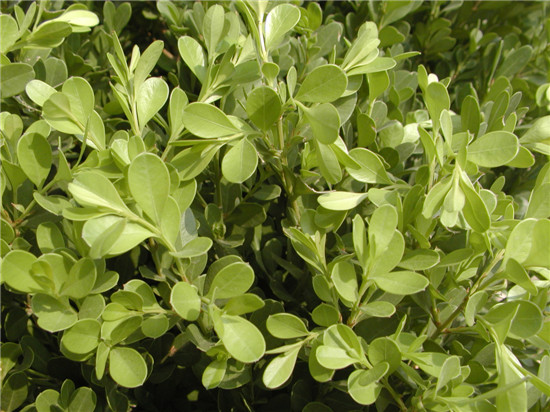The characteristics of the small leaf box are introduced.
Euonymus microphylla belongs to evergreen shrubs or small trees of Populus tomentosa family, which can keep growing well under general indoor and outdoor conditions. next, let's take a look at the potted plants of Euonymus tomentosa.

The trunk of Buxus tomentosa is gray and smooth, with dense branches and four-angled branches. Leaves opposite, leathery, entire, elliptic or Obovate, apex rounded or retuse, surface bright green, abaxially yellowish green. Flowers clustered in leaf axils or branch ends, blooming from April to May, flowers yellowish green.
The genus also has yellow poplar with spoon-shaped or oblanceolate leaves, dark green and glossy surface, and pearl yellow poplar, evergreen, shrub, leaf-shaped and glossy. The above two kinds of trees are graceful and are precious species for making bonsai. It is resistant to overcast and light, and can maintain good growth under general indoor and outdoor conditions.
In the long-term shady environment, although the leaves can remain green, it is easy to lead to excessive growth or weakening of branches. It grows in areas ranging from 1200 meters to 2600 meters above sea level, and is mostly born in valleys, streams and forests. At present, it is cultivated in all provinces for ornamental purposes. Capsule subglobose, short hornlike, ripe in July, divided into three valves when ripe.

Ecological characteristics of Populus tomentosa
The main results are as follows: 1. Endure overcast and like light, and can maintain good growth under general indoor and outdoor conditions. In the long-term shady environment, although the leaves can remain green, it is easy to lead to excessive growth or weakening of branches.
2, like moist, can withstand the cloudy and rainy weather for about a month, but avoid stagnant water for a long time.
3. Drought tolerance, as long as the surface soil or basin soil is not completely dry, there is no abnormal performance.
4, heat-resistant and cold-resistant, can withstand summer exposure and severe cold of minus 20 degrees Celsius, but it should be ventilated and transparent when it is hot and humid in summer.
5. it is not strict to the soil, the easy and fertile sandy loam is better, and the potted plant can also be used together with vermiculite, peat or soil, which has strong alkali resistance.
6. Strong tillering, resistant to pruning and easy to form.
7. After sufficient light and dormancy in autumn, the leaves can turn red.
8. Pots can be changed or transplanted in four seasons. In summer or when new buds germinate, transplanting should pay attention to shading and prevent the basin soil from getting too wet, otherwise it will easily lead to defoliation of the original leaves.

How to raise the bonsai of Populus tomentosa
Watering: yellow poplar likes to be moist, bonsai needs to be watered frequently to keep the basin soil moist, but not stagnant water. During the high temperature in summer, water should be watered and foliar water should be sprayed in the morning and evening.
Fertilization: in the growing period from May to August, apply 2-3 rotten and thin cake fertilizer and water, apply base fertilizer once in winter, and use compost or dry cake manure.
Pruning: cut off overgrown branches, overlapping branches and extra branches that affect the shape of the tree at any time during the growing period. Populus tomentosa germinates faster, generally after sending new shoots, the first 1-2 segments will be cut off to prevent overgrowth. After fruiting, boxwood should be picked in time so as not to consume nutrients and affect the growth of trees.
Turn the basin: it is usually carried out once every 2-3 years, and the time is better before germination in spring. Combined with turning the basin to cut off part of the old roots and over-long and dense roots, replace the old soil and plug it with fertile and loose culture soil to facilitate the root system development.

Pest control: the main pests of yellow poplar are shell insects and yellow poplar rulers, which can be killed by manual brushing or sprayed with 1500 times of dichlorvos, or 1000-2000 times with 40% omethoate. The main disease is coal fouling disease, which will cause defoliation. The key to prevention and treatment is to remove shell insects, and often spray foliar water to wash dust to make it grow well.
The above is my summary of the characteristics of Euonymus tomentosa, the introduction of the whole content, I hope this article can help you. Please continue to follow us.
Related
- Wuhan Hospital Iron Tree Blooming Result Was Instantly Frightened by the Gardener Master
- Which variety of camellia is the most fragrant and best? Which one do you like best?
- What is the small blue coat, the breeding methods and matters needing attention of the succulent plant
- Dormancy time and maintenance management of succulent plants during dormancy
- Minas succulent how to raise, Minas succulent plant pictures
- What are the varieties of winter succulent plants
- How to raise succulent plants in twelve rolls? let's take a look at some experience of breeding twelve rolls.
- Attention should be paid to water control for succulent plants during dormant period (winter and summer)
- Watering experience of twelve rolls of succulent plants
- Techniques for fertilizing succulent plants. An article will let you know how to fertilize succulent plants.



